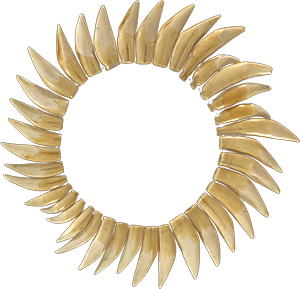MAOI & RIMA
The DMT provided by the psychotria viridis leaves is not orally active because of so called MAO enzymes. Located in our guts, these enzymes break down the DMT before it enters our bloodstream. In the ayahuasca brew, the banisteriopsis caapi vine provides MAO-Inhibitors (MAOI), which temporarily and selectively suspend the barrier provided by these enzymes, and allow the DMT to be absorbed.
MAO stands for Monoamine Oxidase; two enzymes, MAO-A and MAO-B, are found naturally within the human gastrointestinal tract. The MAO barriers are a safety mechanism that protects us from a range of mildly dangerous foods. For example, without those enzymes a slice of aged cheese might just knock us out.
While Ayahuasca is often said to be a MAO-Inhibitor, more precisely is it actually a RIMA - a Reversible Inhibitor of Monoamine Oxidase. There are some significant differences between a MAOI and a RIMA. First of all, MAOIs last much longer; pharmaceutical MAOIs tend to have a duration of a few days to a few weeks. RIMAs, on the other hand, only last a few hours after ingestion. Also, the RIMA mechanism of ayahuasca shows a more selective inhibition process than its synthetic counterparts. These differences explain why there are no known fatalities caused by ayahuasca, as opposed to the occasional deaths caused by synthetic MAOIs drugs.
TYRAMINE AND MAOIS
A lot of foods contain the amino acid “tyramine”. A certain amount of tyramine is not a problem for our system. But if the MAO enzymes have been inhibited, tyramine can be freely absorbed in amounts larger than what the body can handle.
Ayahuasca does not inhibit the breakdown of tyramine completely, allowing the body to continue to regulate it to a degree. As a result, there are no known fatalities as a result of eating foods containing tyramine when taking Ayahuasca, but it is still wise to practice caution, especially for those with high blood pressure or known heart problems.

